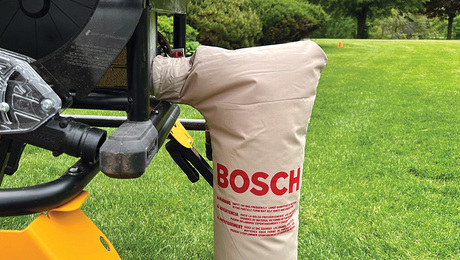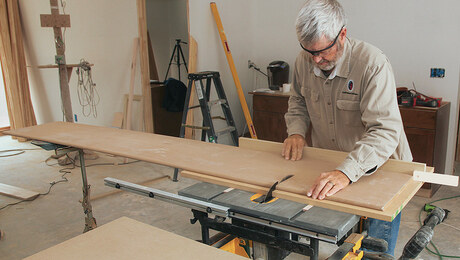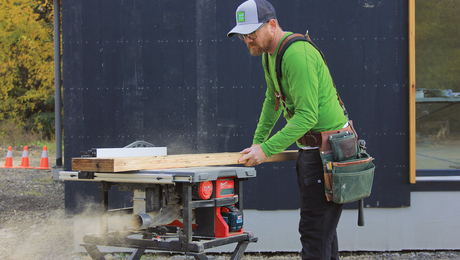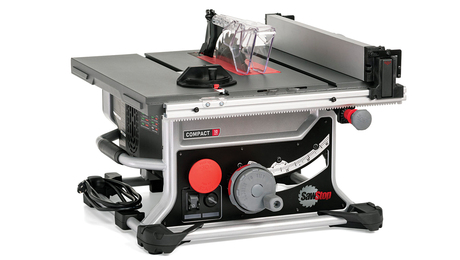Testing the Best Portable Tablesaws
Power, precision, portability, and 24-in. rip capacity for under $600.
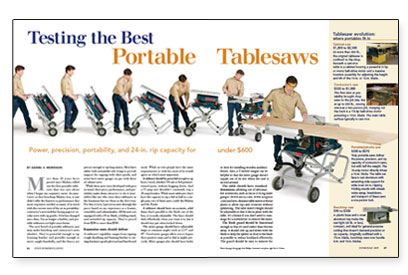
Synopsis: This tool review from 2005 explains the basic features of portable tablesaws, helping any shopper know what’s important and what isn’t. The article goes on to test and rate seven current models.
More than 20 years have passed since Makita rolled out the first portable table-saw; that was just about when I began my carpentry career. As innovative as that benchtop Makita was, it just didn’t offer the features or performance that most carpenters needed, so many of us stuck with the current state of the art in portability: contractor’s saws or circular saws with rip guides. A lot has changed since then. I’m no longer a builder, and portable tablesaws are light-years better.
The new breed of portable tablesaws just may make benchtop and contractor’s saws obsolete. They’re powerful enough to rip framing lumber and portable enough to move single-handedly, and the fences are precise enough to rip long miters. Most have tables with extendable side wings to provide support for ripping wide sheet goods, and some have miter gauges on par with those of cabinet saws.
While these saws were developed with pros in mind, their price, performance, and portability make them attractive to do-it-yourselfers like me who store their tablesaws in the basement but use them in the driveway. For this review, I put seven saws through the paces based on my experience as a framer, remodeler, and cabinetmaker. All the saws are equipped with a 10-in. blade, a folding stand, and extended rip capacity. They’re priced from $200 to more than $500.
Expensive saws should deliver
A tablesaw’s capability ranges from ripping rough sheathing and framing lumber to cutting furniture-grade plywood and hardwood stock. While no two people have the same requirements or wish list, most of us would agree on what’s most important.
A tablesaw should be powerful enough to rip heavy wood, whether 5/4 oak or 4×4 pressure-treated posts, without bogging down. And a 15-amp saw shouldn’t constantly trip a 20-amp breaker. While most tablesaws don’t have the capacity to rip a 4×4 in half in a single pass, two of these saws could: the Makita and the Ryobi.
A tablesaw should have an accurate, solid fence that’s parallel to the blade out of the box, or is easily adjustable. The fence should slide effortlessly when you want it to, but it should stay put when locked down.
The miter gauge should have adjustable stops at common angles such as 22.5° and 45°. Good miter gauges allow you to bypass these positive stops and to dial in angles precisely. Miter gauges also should have holes or slots for installing wooden auxiliary fences. Also, a T-slotted tongue can be helpful so that the miter gauge doesn’t topple out of its slot when the saw is moved around.
The table should have standard dimensions, allowing use of aftermarket accessories, such as Incra or Kreg mitergauges (www.incra.com; www.kregtool.com) and zero-clearance table inserts or throat plates to allow rips and crosscuts without splintering. The table insert’s height should be adjustable so that it lies in plane with the table. It’s a bonus if you don’t need to rummage for a screwdriver to remove the insert.
For more photos and details, click the View PDF button below:
Fine Homebuilding Recommended Products
Fine Homebuilding receives a commission for items purchased through links on this site, including Amazon Associates and other affiliate advertising programs.

Pretty Good House

Get Your House Right: Architectural Elements to Use & Avoid
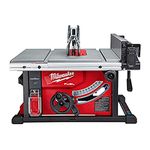
Milwaukee Cordless Tablesaw (2736)













